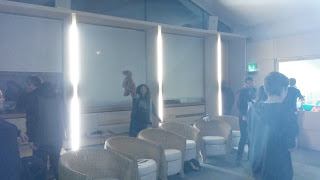14th November
We started the day by finishing the editing for our films. As a group, we identified the weakest areas in our film, and changed or removed these. We worked through our film until we had a version that we were mostly happy with.
After lunch, we had a session on DSLR from Richard Wakefield, where we learnt about DSLR camera's and how to get the best footage out of them. I found his story really interesting, and was amazed by the huge range of amazing things that he had filmed. I also found it incredible how he was so resourceful, using one piece of equipment for many different tasks. It was also really cool how he only had the most basic equipment, and didn't feel the need to buy the super expensive equipment.
We then had a quick viewing of all the different films. We sat down to watch what we had made during the week, and to see what the others had been doing. We then gave feedback on the other films, and collected some about ours.
I agree with the feedback, as I think that our film was quite vague and confusing. Our group decided to work on our film in the morning of day 10, and try to make it more understandable.


























